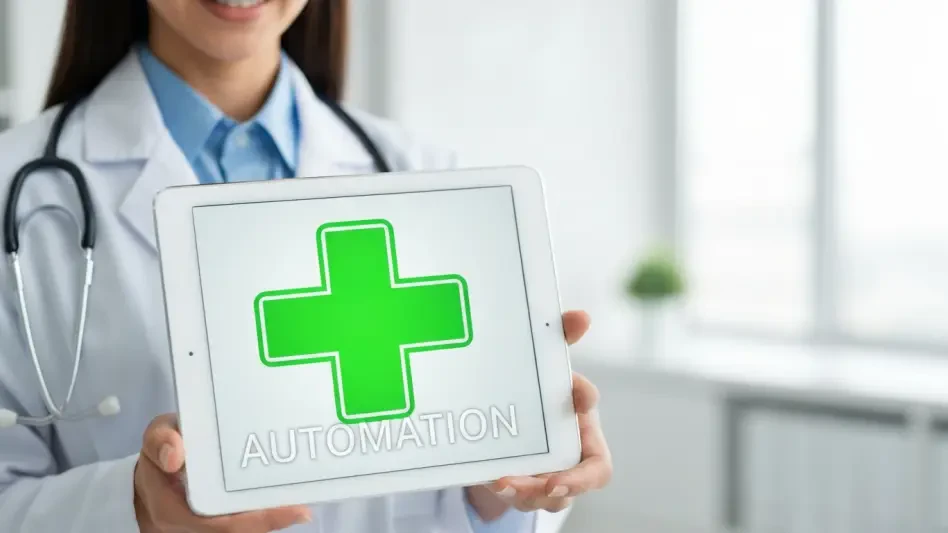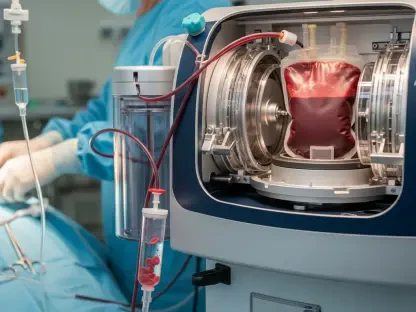Hospitals today face an unprecedented challenge in managing complex operational workflows while ensuring patient safety and regulatory compliance under tight resource constraints. With millions of medical devices in use across healthcare facilities, the burden of manual quality assurance (QA) testing and maintenance has become a significant bottleneck, often leading to costly downtime and potential safety risks. This review delves into the transformative potential of workflow automation technologies in hospital settings, spotlighting solutions like OneQA by Fluke Biomedical, to understand how they address these pressing issues and reshape healthcare technology management (HTM) for greater efficiency and reliability.
Understanding Hospital Workflow Automation
Hospital workflow automation refers to the application of digital tools and systems to streamline repetitive, labor-intensive tasks traditionally performed manually by biomedical engineers and technicians. The core principle lies in reducing human error and enhancing operational speed, particularly in areas like equipment maintenance and safety testing. As healthcare demands grow, the shift from paper-based or manual processes to automated solutions has become essential to keep pace with increasing workloads and stringent safety standards.
This transition is especially critical in the realm of QA for medical equipment, where ensuring devices like ventilators and defibrillators are safe and functional can directly impact patient outcomes. Automation addresses the inefficiencies of fragmented workflows by standardizing procedures and minimizing variability, thereby bolstering safety, compliance, and productivity across the broader healthcare landscape.
Core Features of Workflow Automation Technologies
Automation of Quality Assurance Testing
One of the standout features of hospital workflow automation lies in its ability to revolutionize QA testing for medical equipment, such as electrical safety assessments. Tools like OneQA enable predefined test sequences that run automatically on connected Fluke Biomedical instruments, capturing results in real time without manual input. This capability drastically cuts down on testing duration and eliminates errors often associated with handwritten notes or manual data entry.
Beyond speed, such automation ensures consistency in testing protocols, which is vital for maintaining high safety standards across diverse devices like cardiac monitors or ventilators. The reduction in human intervention not only streamlines maintenance workflows but also allows technicians to focus on complex troubleshooting rather than routine tasks, enhancing overall departmental efficiency.
Integration with Hospital Management Systems
A pivotal aspect of modern automation tools is their seamless integration with Computerized Maintenance Management Systems (CMMS), which are central to hospital asset tracking and maintenance scheduling. By leveraging open APIs, solutions like OneQA facilitate automatic data transfer from testing devices to CMMS platforms, ensuring that equipment status updates are instantaneous and accurate. This connectivity removes the need for duplicate data entry, a common source of errors in manual systems.
Such integration also enhances audit readiness by maintaining a comprehensive, up-to-date record of compliance and maintenance activities. Hospital managers gain real-time visibility into device conditions, enabling informed decisions on resource allocation and maintenance priorities, ultimately fostering a more proactive approach to asset management.
Recent Advancements in Hospital Automation
The landscape of hospital workflow automation has seen remarkable progress in recent years, driven by the healthcare industry’s push toward digitization. Innovations in digital tools now emphasize interconnected ecosystems where data from various hospital systems can be aggregated and analyzed for actionable insights. This trend reflects a growing expectation for technology to not only solve immediate operational challenges but also build long-term resilience against resource constraints.
Emerging solutions are increasingly incorporating features like cloud-based data storage and mobile access, allowing technicians to manage workflows remotely and collaborate across departments. These advancements signify a broader shift toward data-driven decision-making, positioning hospitals to adapt swiftly to evolving demands and regulatory requirements.
Additionally, the focus on user-centric design in newer automation platforms ensures that even non-specialist staff can operate complex testing equipment with minimal training. This adaptability is crucial in addressing workforce shortages and maintaining operational continuity in dynamic healthcare environments.
Real-World Applications and Impact
In practical settings, workflow automation has demonstrated tangible benefits by minimizing equipment downtime for critical devices such as ventilators and defibrillators. Hospitals adopting automated QA processes report shorter testing cycles, ensuring that life-saving equipment remains available for clinical use without unnecessary delays. This improvement directly translates to better patient care accessibility.
Standardized testing protocols enabled by automation also promote uniformity across departments, reducing variability in maintenance practices within large health networks. Such consistency fosters collaboration and transparency, allowing for benchmarking and strategic alignment of maintenance efforts across multiple facilities.
The impact extends to staff productivity as well, with auto-generated reports slashing administrative burdens and freeing up technicians for hands-on tasks. This shift not only boosts morale but also mitigates the risk of burnout, supporting a more sustainable workforce in the face of growing healthcare demands.
Challenges and Limitations of Workflow Automation
Despite its promise, implementing workflow automation in hospitals is not without hurdles, particularly in technical integration with legacy systems. Many facilities still rely on outdated CMMS platforms that may not easily sync with modern automation tools, creating data silos and hampering efficiency gains. Addressing these compatibility issues often requires significant investment in system upgrades.
Regulatory compliance adds another layer of complexity, as automation solutions must align with stringent global standards while ensuring data security and privacy. Navigating these requirements demands robust safeguards and continuous updates to software, which can strain hospital budgets and IT resources.
Cultural resistance within hospital settings also poses a barrier, as staff accustomed to manual processes may be hesitant to adopt new technologies. Overcoming this challenge necessitates intuitive interfaces and comprehensive training programs to build trust and demonstrate the value of automation in daily operations.
Future Prospects of Hospital Workflow Automation
Looking ahead, the trajectory of hospital workflow automation points toward exciting possibilities, particularly with the integration of data analytics for predictive maintenance. By analyzing historical testing data, future systems could anticipate equipment failures before they occur, enabling preemptive repairs and further reducing downtime. This proactive approach holds immense potential for enhancing operational stability.
The evolution of interconnected systems is also expected to deepen, with automation tools playing a central role in strategic asset management over the coming years. From 2025 to 2027, advancements in artificial intelligence could refine decision-making algorithms, offering even more precise insights into maintenance needs and resource optimization.
Ultimately, the long-term vision for automation in healthcare is to create resilient ecosystems where technology not only streamlines routine tasks but also empowers hospitals to adapt to unforeseen challenges. This forward-looking perspective underscores the strategic importance of investing in automation as a cornerstone of modern healthcare infrastructure.
Final Thoughts
Reflecting on this exploration of hospital workflow automation, it becomes evident that technologies like OneQA have already made substantial strides in addressing inefficiencies and enhancing safety within healthcare technology management. The detailed analysis of features such as automated QA testing and CMMS integration highlights their transformative impact on operational workflows and compliance adherence. Moving forward, hospitals should prioritize pilot programs to test automation solutions in specific departments, leveraging scalable platforms to gradually expand adoption. Additionally, investing in staff training and stakeholder engagement will be crucial to overcoming cultural barriers and ensuring seamless integration. As the industry continues to evolve, forming partnerships with technology providers for customized solutions could further tailor automation to unique hospital needs, paving the way for smarter, safer healthcare delivery.









